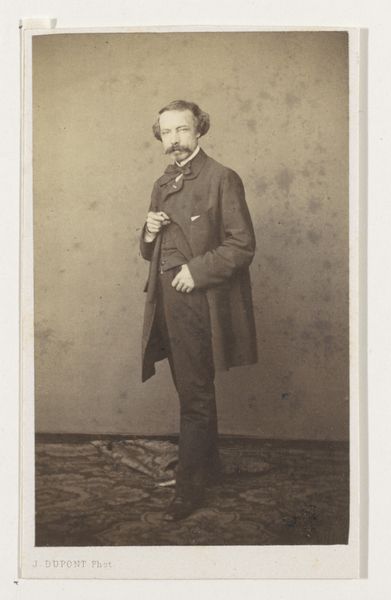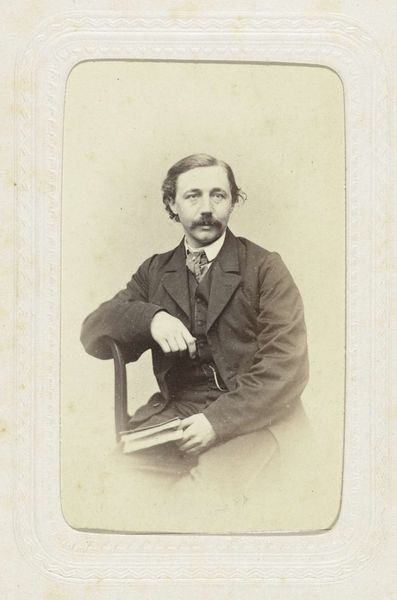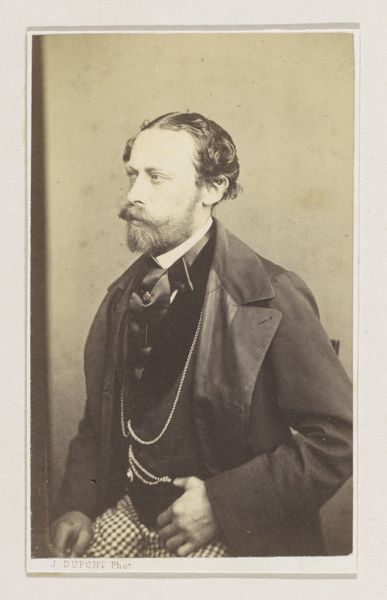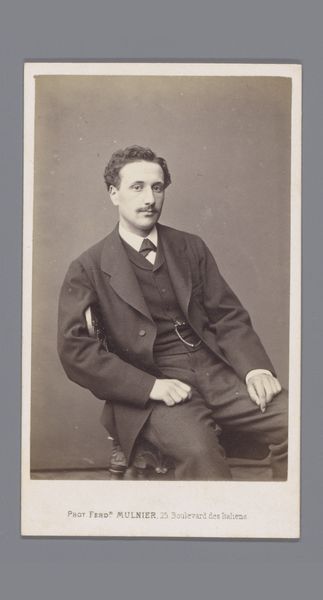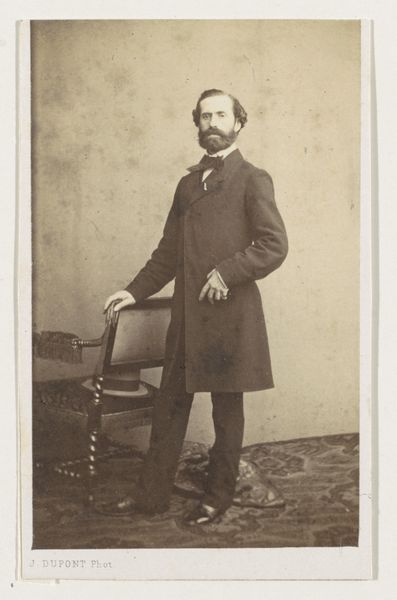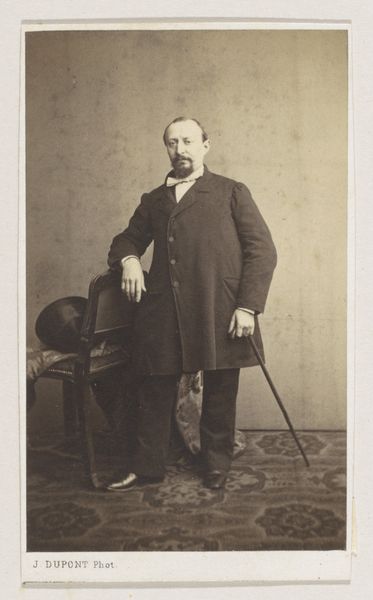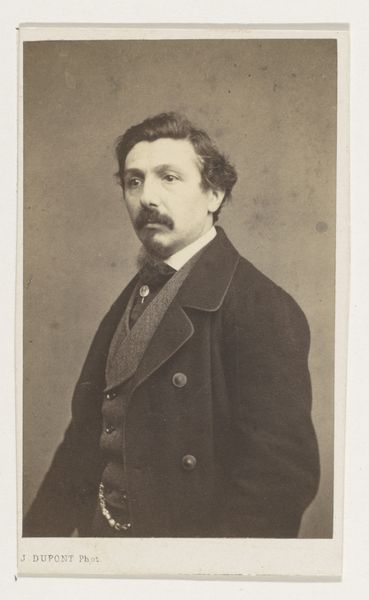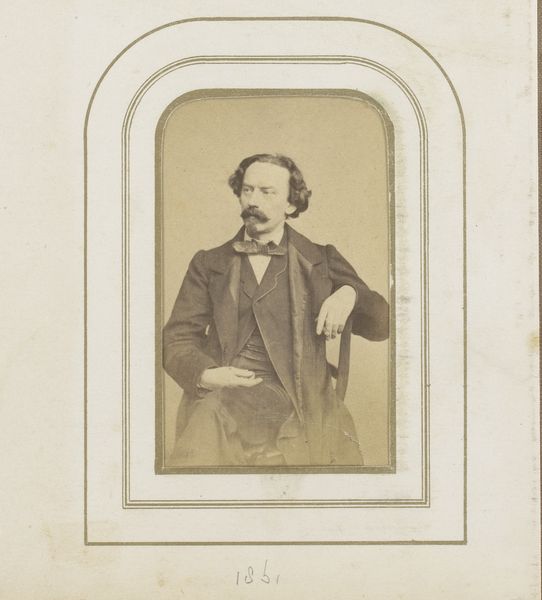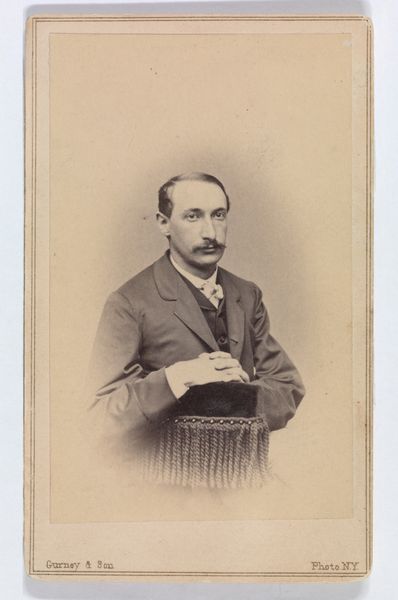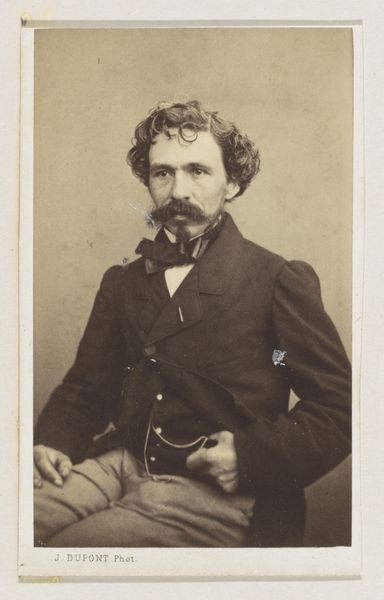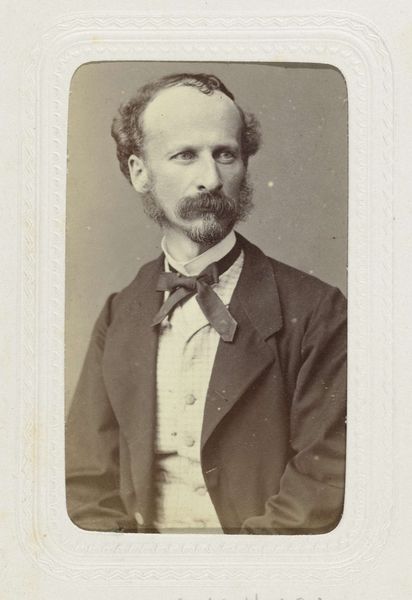
Dimensions: height 100 mm, width 62 mm
Copyright: Rijks Museum: Open Domain
Curator: It’s interesting how time transforms not only art but also our perceptions of it. What springs to mind for you when you first glance at this piece? Editor: Melancholy, I guess? He looks like he's just heard some bad news. I picture him sighing theatrically, maybe while composing a tragic poem in his head. It’s one of those portraits that whispers a thousand untold stories. Curator: Precisely! This daguerreotype from 1861 presents us with a half-figure portrait of the painter Eugène François de Block. Dupont was the photographer, as evidenced at the bottom of the piece. Within its photographic emulsion lies a narrative intertwined with the cultural currents of the time. Editor: There's a delicate tension there; Romanticism meets the rigidity of early photographic techniques. You feel he's both performing and trying to exist authentically within the confines of the era’s expectations. Do you know more about the photographic process involved? I find the materiality very affecting, particularly the almost monochrome nature. Curator: This daguerreotype would have demanded considerable composure from de Block, given the lengthy exposure times required, reflective of early photography's technological constraints but also, if you think about it, the social constructions around male identity. The unflinching gaze confronts viewers with questions of power and visibility and masculinity as a constructed role. Editor: That mustache certainly seems very carefully styled, adding a performative note to his apparent “depth.” He's consciously building a persona, isn't he? The very act of choosing this particular pose seems telling... as if curating himself. He’s making art *and* becoming it at the same time! Curator: Absolutely, it resonates with contemporary debates around self-representation and performativity, prompting conversations about who gets to control narratives and the power structures that shape our gaze, our gaze today and the artist’s then. Editor: This little image packs a big punch, emotionally and intellectually. Curator: Indeed; and invites us to critically reassess how historical artworks engage with prevailing societal discourses on representation and agency, and how very much our gaze shifts through time, influenced by those very conversations.
Comments
No comments
Be the first to comment and join the conversation on the ultimate creative platform.
